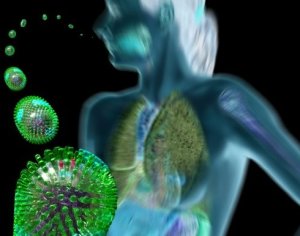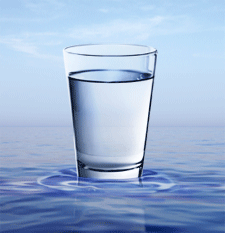In your lifetime, it’s likely that you have taken some type of medicine – whether over-the-counter or prescription. Chances are you were well-aware of the medicine you were taking, the possible side-effects and the reason you were taking it. But what if you were exposed to certain medications without your knowledge – or permission? Sounds kind of scary, doesn’t it? Well, that very thing might be occurring right now.
A recent investigation and subsequent report by the Associated Press reveals that drinking water supplies in 24 major metropolitan areas were found to include a vast array of prescription drugs, including antibiotics, anti-convulsants, mood stabilizers and sex hormones, as well as OTC medicines such as acetaminophen and ibuprofen.
Is your water affected? How did this happen? Are you in danger? You’re sure to have many questions regarding this recent discovery. Take a look below for some clarification and information about this possible health scare.
Should you fear for your health?
While your immediate health and well-being is likely not at risk, the threat of long-term consequences is not known at this time. The concentration of drug levels found is quite low (reportedly measured in parts per billion or trillion) and the water utilities insist the water is safe. But representatives from both the government and private organizations claim to be unsure whether the levels are low enough to discount harmful health effects.
The Associated Press reports that recent laboratory research found that small amounts of medication have affected human embryonic kidney cells, human blood cells and human breast cancer cells – specifically, the kidney cells grew too slowly, the blood cells showed activity associated with inflammation and the cancer cells proliferated too quickly.
Another concern is that certain drugs, or a combination of drugs, may be harmful over time because water is often consumed in sizable amounts every day. And while your body may be able to deal with a larger, one-time dose, it may suffer more from smaller amounts ingested over a longer period of time.
How did the water become tainted?
According to the Associated Press’s report, there are a number of ways the drugs could have entered the drinking water supply:
• Unused and unneeded medications flushed down the toilet
• Undigested or unabsorbed medications passed through urine or feces
• Pharmaceuticals resistant to wastewater treatments and cleansing
The issue becomes even more relevant as the number of prescription medications have risen considerably over the past five years.
Some treatment methods, such as adding chlorine, can make certain pharmaceuticals even more toxic than they were to begin with.
Are certain individuals, like babies and the elderly, more susceptible to possible effects?
As with any other environmental or medical threat, fetuses, babies and toddlers are more sensitive because their bodies are still developing. Pregnant women, the elderly and those who are ill may also be more susceptible.
What can you do to make sure your water is safe?
While boiling water usually eliminates harmful substances, it won’t work for this problem. Also, if you think you’re preventing exposure by drinking bottled water – you’re wrong. Twenty five percent of bottled water actually comes from the tap.
Some filtration systems, such as those which perform reverse osmosis, may reduce the levels of pharmaceuticals but not completely eliminate them.
You can be proactive in raising awareness by contacting your local public utilities and asking them what pollutants they test for in drinking water. And of course, you can help prevent further contamination by disposing of unused medications properly – by NOT flushing them down the toilet! Instead, put medications in a sealed container and in the trash – but make sure children or pets can’t get to that container.
So – health scare or health hoax?
Realistically it’s too early to determine what kind of effects the contaminated water can have on human health, as there are so many unknowns at this point. However, you can be sure that the issue is an area of great concern and will be investigated further.
Get Strong! Stay Strong!
Chris







